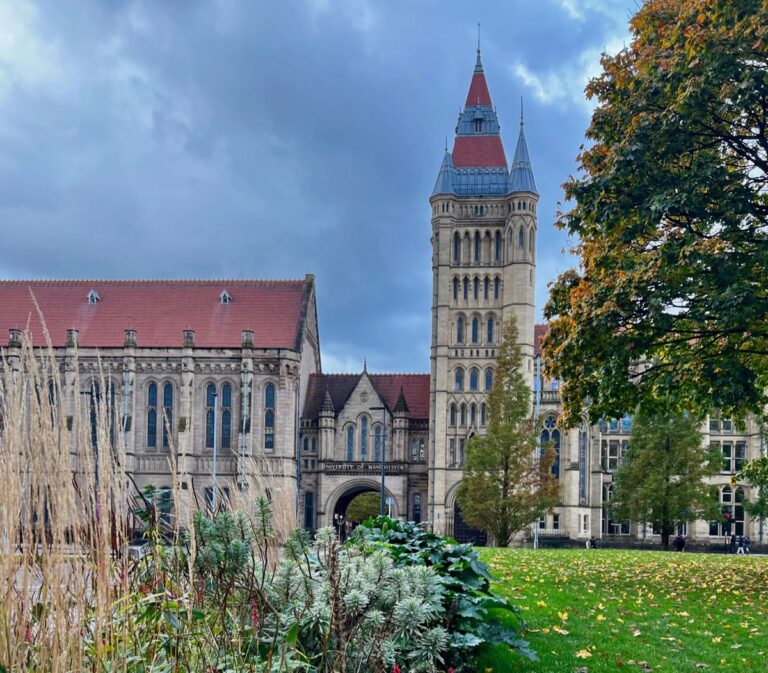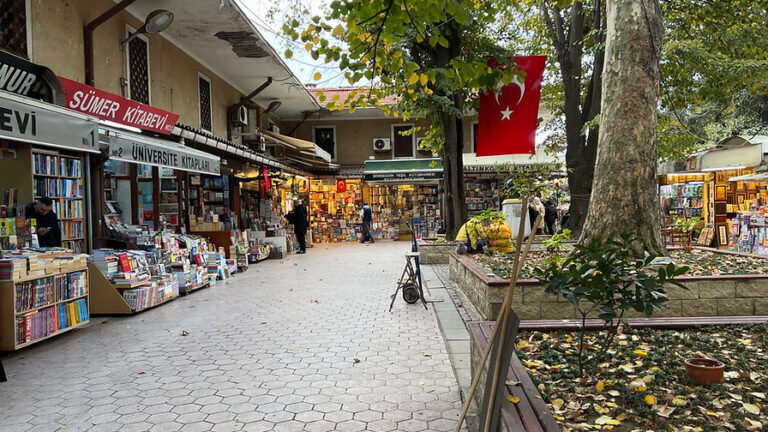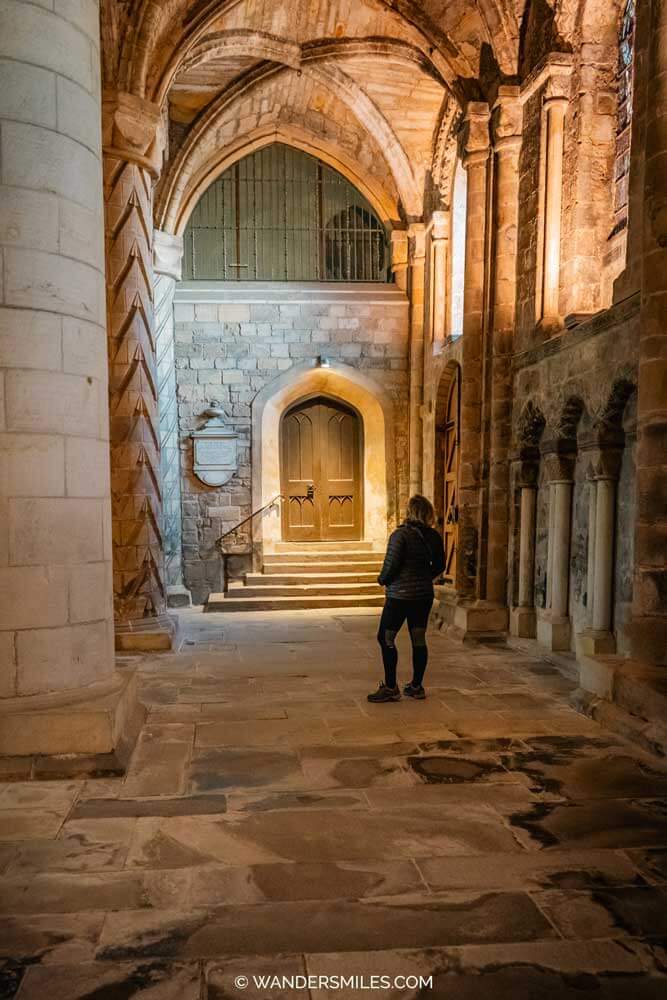BAGAIL 8 Set Packing Cubes Luggage Organizer Bags for Travel Accessories-Cream
$16.99 (as of April 16, 2025 04:30 GMT +00:00 - More info)In “Skopje Blends Ancient History with Modern Charm,” you’re transported to the heart of North Macedonia’s capital where history and contemporary life seamlessly mingle. As you join Eric and Nataliya, guided by the knowledgeable history professor Dragan, you’ll discover the juxtaposition of ancient and modern elements that define Skopje. From the storied Stone Bridge and vibrant Old Bazaar to the impressive Mustafa Pasha Mosque and kaleidoscopic Macedonia Square, every site weaves a tale of Skopje’s rich cultural tapestry. As you explore, you’ll uncover the historical depths of Kale Fortress, the tranquil Church of St. Clement of Ohrid, and the poignant Memorial House of Mother Teresa. The controversial Skopje 2014 project, with its ambitious array of statues and monuments, adds yet another layer of complexity and intrigue to this fascinating city, leaving you to ponder its impact on Skopje’s identity and legacy. Have you ever wondered how a city can embody both ancient history and modern vibrance, creating a vivid tapestry that tells countless stories? Welcome to Skopje, North Macedonia – a city where every corner whispers tales from bygone eras while embracing the pulse of contemporary life. Guided by history professor Dragan, travelers Eric and Nataliya embarked on an unforgettable journey through this captivating city. Let’s delve deeper into the wonders of Skopje and explore how it seamlessly blends the old with the new.
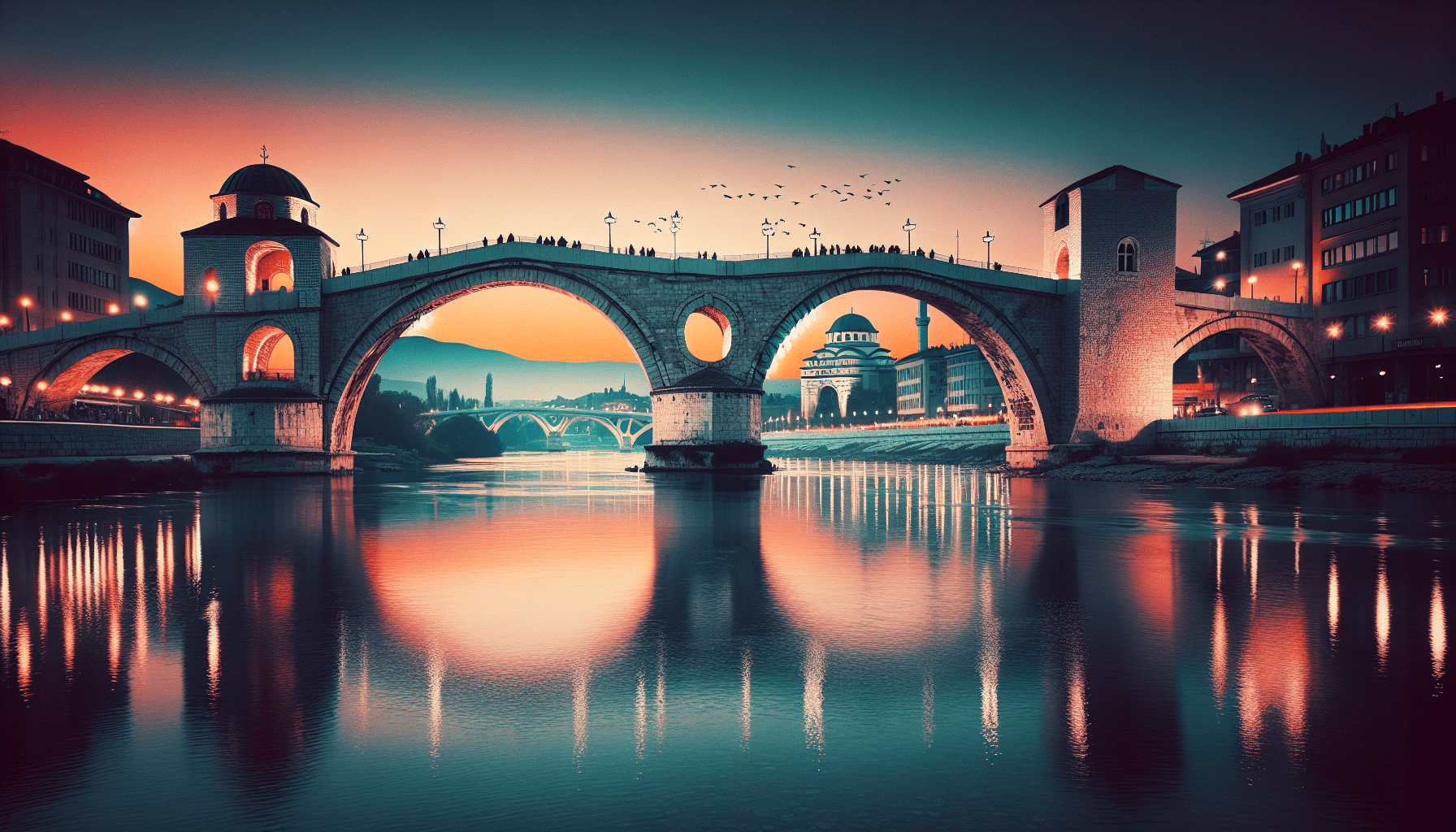
Search vacation packages & trips
The Historical Essence of Skopje
Skopje is much more than the capital of North Macedonia; it’s a living, breathing testament to the resilience and amalgamation of diverse cultures over centuries. Its landscape is dotted with remnants from Roman, Byzantine, Ottoman, and modern influences. Each epoch has left its indelible mark, crafting a unique urban mosaic.
The Stone Bridge: A Passage Through Time
The Stone Bridge is arguably one of the most iconic landmarks of Skopje. Erected in the 15th century under Ottoman rule, it possibly stands on the foundations of a Roman bridge, symbolizing the layers of history that Skopje rests upon. As you stroll across its sturdy arches, imagine the countless souls who’ve tread the same path over the centuries, connecting the old part of the city to the new.
Key Features of The Stone Bridge:
| Aspect | Description |
|---|---|
| Historical Significance | Possible Roman origins, rebuilt and expanded by the Ottomans in the 15th century. |
| Architecture | 12 solid stone arches, durable and elegant, offering picturesque views of the Vardar River. |
| Modern Role | Connects Macedonia Square (city center) to the Old Bazaar, symbolizes unity and continuity. |
Skopje Old Bazaar: A Blend of Ottoman and European Vibes
Take a step back in time as you wander through Skopje’s Old Bazaar. This vibrant marketplace is a sensory feast, brimming with the aroma of traditional foods, the hum of bargaining locals, and a splash of colorful wares. The Old Bazaar seamlessly fuses Ottoman charm with European flair, offering you an unmissable glimpse into Skopje’s eclectic past and dynamic present.
Highlights of the Old Bazaar:
- Bustling Markets: From spices to handcrafted jewelry, the bazaar’s markets are a treasure trove of cultural artifacts.
- Hidden Courtyards: Discover quaint cafes and traditional teahouses tucked away in serene courtyards.
- Architectural Wonders: Marvel at the mixture of Ottoman caravansaries, medieval churches, and European-style buildings.
Mustafa Pasha Mosque: A Testament to Historical Significance
In the heart of the Old Bazaar stands the Mustafa Pasha Mosque, an enduring symbol of Skopje’s Islamic heritage. Built in 1492, this mosque has witnessed the city’s transformation over centuries and remains a profound architectural gem.
Features of Mustafa Pasha Mosque:
- Strategic Location: Overlooks the Old Bazaar, emphasizing its historical and cultural significance.
- Architectural Design: A stunning blend of Islamic art and architecture, showcasing intricate calligraphy and stone carvings.
- Historical Preservation: Meticulously preserved, offering insight into Skopje’s Ottoman past.
Kale Fortress: A Strategic Sentinel
Perched on a hill overlooking the city, the Kale Fortress or Skopje Fortress is an enduring symbol of Skopje’s historical and strategic importance. This fortress has guarded the city for centuries and offers panoramic views of Skopje and the Vardar River.
Exploring the Kale Fortress:
- Historical Layers: Constructed in the 6th century and rebuilt several times, it bears witness to various epochs of Skopje’s history.
- Architectural Features: Thick walls, watchtowers, and underground tunnels speak volumes about its defensive prowess.
- Cultural Events: The fortress often hosts cultural events, offering a contemporary twist to ancient surroundings.
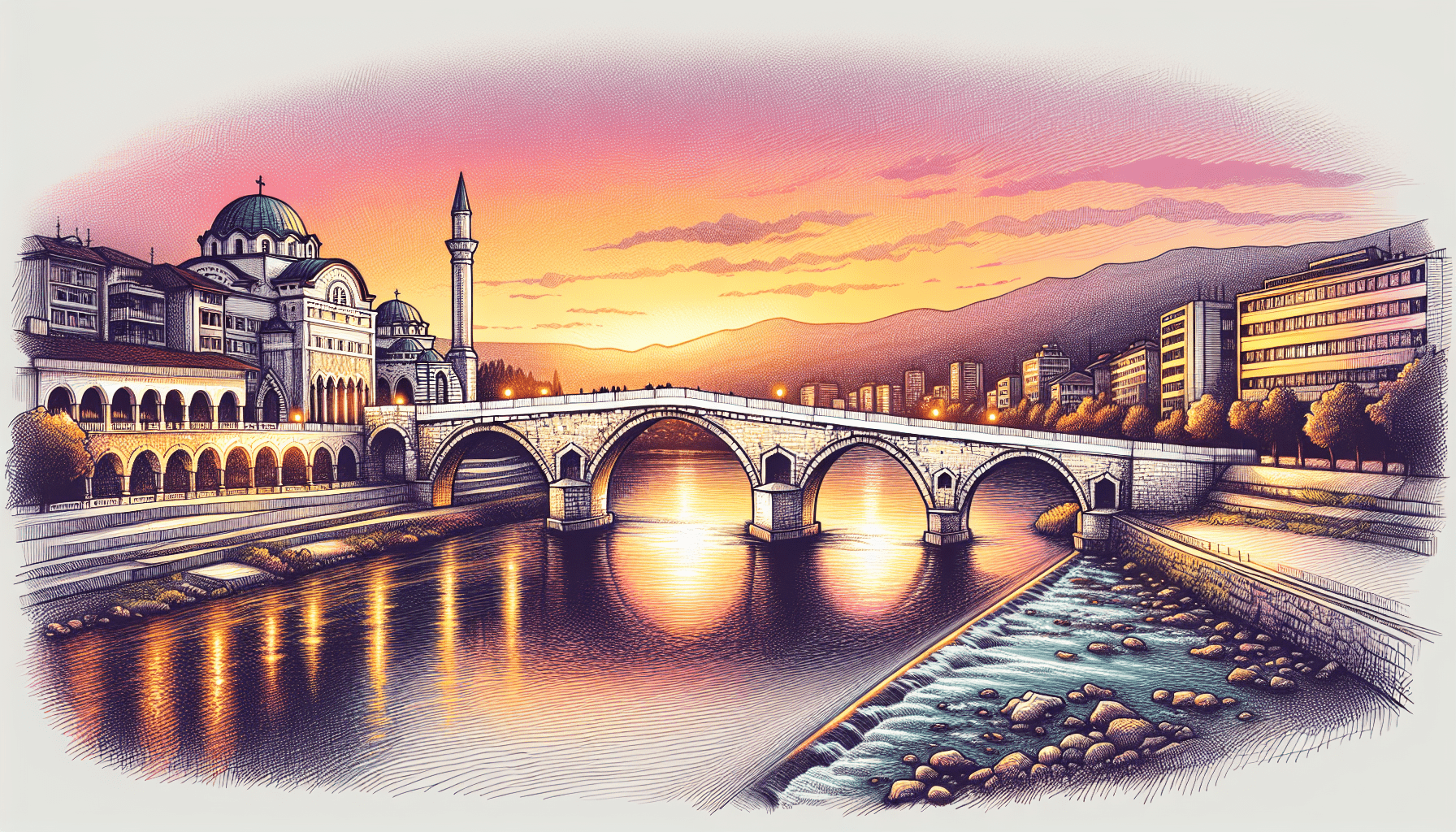
Top domestic vacation destinations
The Blend of Byzantine and Modern: Church of St. Clement of Ohrid
The Church of St. Clement of Ohrid is a magnificent example of the harmonious blend of Byzantine and contemporary architectural styles. Completed in 1990, this modern cathedral pays homage to Byzantium’s rich architectural legacy while integrating contemporary design elements.
Features of St. Clement of Ohrid Church:
- Architectural Blend: Dome-centric design with modern touches, symbolizing the unbroken link between the past and present.
- Cultural Significance: Baptismal site for Macedonian Orthodox Christians, fostering a sense of community and tradition.
- Interior Decor: Lavish frescoes and ornate icons depict biblical tales and saints, immersing you in spiritual ambiance.
Homage to Humanitarian Spirit: Memorial House of Mother Teresa
An ode to Skopje’s most revered figure, the Memorial House of Mother Teresa stands proudly in the city, honoring her relentless humanitarian spirit. Born in Skopje in 1910, Mother Teresa’s legacy transcends borders, and this memorial captures her life’s work and philosophy.
Inside the Memorial House:
- Exhibits: Personal belongings, letters, and photographs narrate the story of Mother Teresa’s life and mission.
- Interactive Displays: Engaging multimedia presentations allow you to delve deeper into her humanitarian efforts.
- Chapel: A serene, reflective space invites you to connect with the enduring spirit of kindness and charity.
Macedonia Square: The Heartbeat of Skopje
Macedonia Square is the bustling epicenter of Skopje, throbbing with life and energy. Dominated by the imposing statue of Alexander the Great, it serves as both a social and political hub, drawing locals and tourists alike with its vibrant atmosphere and significant landmarks.
The Statue of Alexander the Great
Erected as part of the Skopje 2014 project, the statue of Alexander the Great is a towering tribute to Macedonia’s storied past. Its presence in Macedonia Square is both a point of pride and a controversial topic.
Significance of the Statue:
- Historical Tribute: Honors Alexander the Great, a figure of immense historical importance to the Macedonian heritage.
- Symbolic Representation: Stands as a metaphor for strength, resilience, and the enduring spirit of the Macedonian people.
- Controversial Debate: Sparks ongoing discussions about historical authenticity and regional identity issues.
Skopje 2014 Project: Reinventing the City’s Image
Launched with the intent to revamp Skopje’s urban landscape, the Skopje 2014 project introduced numerous statues, monuments, and neoclassical buildings to the city. Designed to foster a sense of national pride and historical continuity, the project has been both praised and critiqued for its ambitious scope.
Monuments and Statues: A Cultural Revival or Controversy?
The Skopje 2014 project’s addition of numerous statues and monuments aimed to cement a cohesive national identity. Yet, opinions are divided on its success and authenticity.
Pros of the Project:
- Cultural Revival: Aims to instill a renewed sense of pride in Macedonian history and heritage.
- Tourist Attraction: Draws visitors with its grandiose and visually striking additions.
- Urban Development: Enhances the aesthetic appeal and infrastructure of the city center.
Cons of the Project:
- Historical Controversies: Some statues and monuments have ignited debates over historical accuracy and regional significance.
- Financial Concerns: Critics argue about the project’s considerable expense amidst economic constraints.
- Public Sentiment: Mixed reactions from locals, with some viewing it as an unnecessary extravagance and others as a cultural boon.
Table summarizing pros and cons:
| Aspect | Pros | Cons |
|---|---|---|
| Cultural Impact | Revives national pride, historical continuity | Historical accuracy debates, perceived inauthenticity |
| Tourism | Attracts visitors, boosts local economy | Over-reliance on tourism |
| Urban Development | Enhances city’s aesthetic and infrastructure | Significant financial costs, questioned resource prioritization |
| Public Sentiment | Some locals embrace cultural rejuvenation | Others view as extravagant and divisive |
Navigating Skopje’s Complex Identity
The introduction of the Skopje 2014 project and the ensuing statues have stirred a nuanced discourse surrounding the city’s identity. These additions reflect a desire to project a unified national narrative, yet they also underscore the complexities inherent in Macedonia’s historical and political landscape.
North Macedonian Identity and Heritage
Skopje’s attempt to reconcile its multifaceted identity involves honoring its ancient past, celebrating its diverse cultural heritage, and navigating contemporary geopolitical realities. Its rich history is an integral part that shapes today’s identity, where the ancient and modern meet.
Ongoing Dialogues and Future Prospects
The dialogues spurred by Skopje’s evolving urban landscape are indicative of a vibrant society grappling with its conscience and legacy. As debates and discussions continue, Skopje remains a city on the move, continuously shaping and reshaping its identity.
Future Prospects:
- Cultural Cohesion: Prioritize inclusive projects that respect and represent diverse heritage aspects.
- Sustainable Development: Balance urban renovation with sustainable practices and fiscal responsibility.
- Community Engagement: Foster active participation from locals to ensure projects resonate with public sentiment.
Conclusion: The Timeless Charm of Skopje
Skopje is more than the sum of its historical landmarks and modern endeavors. It’s a city where the stones of ancient structures echo with tales of the past, while modern developments signify progress and aspiration. Through the eyes of Eric and Nataliya, guided by the insightful historian Dragan, Skopje reveals itself as a wondrous blend of ancient history and contemporary charm.
As you wander through its streets, traverse the Stone Bridge, explore the dynamic Old Bazaar, and ponder upon the towering statues in Macedonia Square, you’ll find yourself immersed in a living history. Skopje invites you to not only witness its journey but to become a part of its ever-evolving narrative. So, go ahead, let Skopje’s rich heritage and modern allure captivate you, just as it has done for countless others through the ages.



